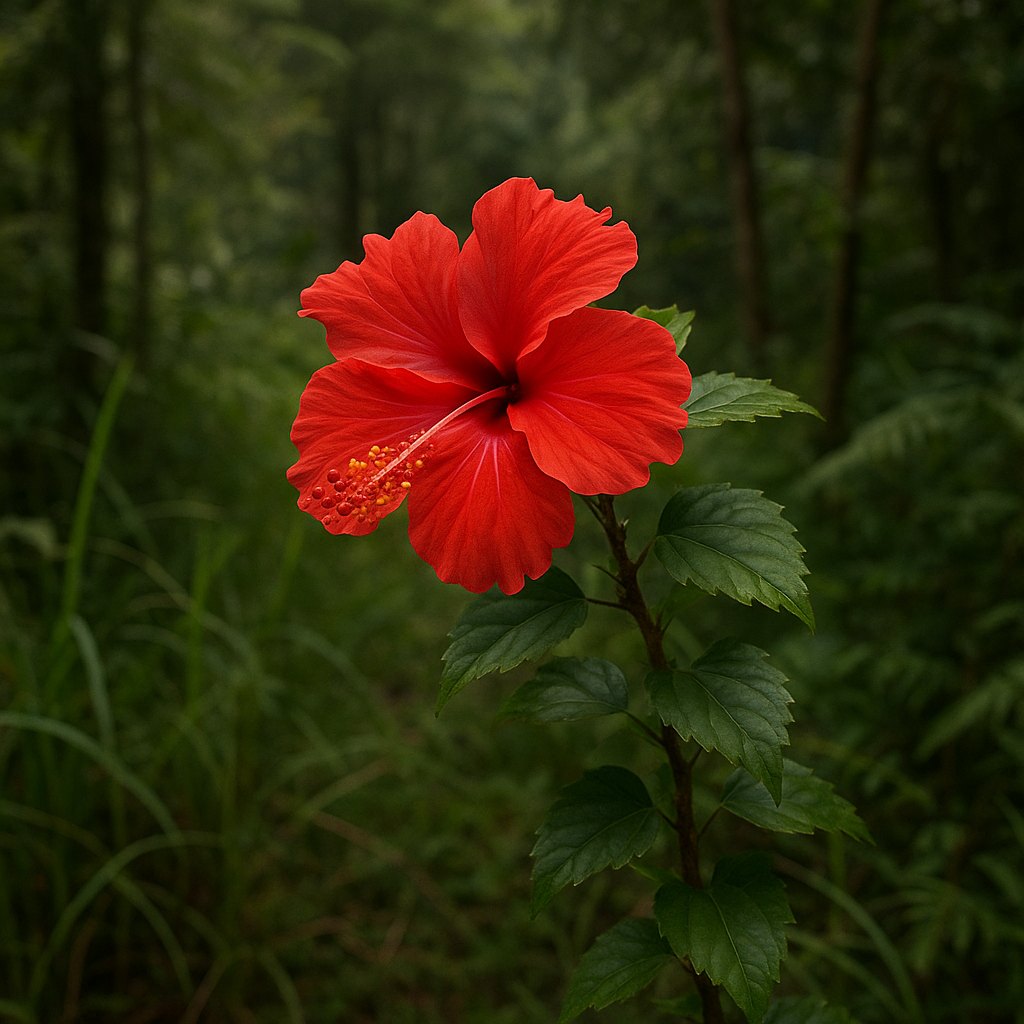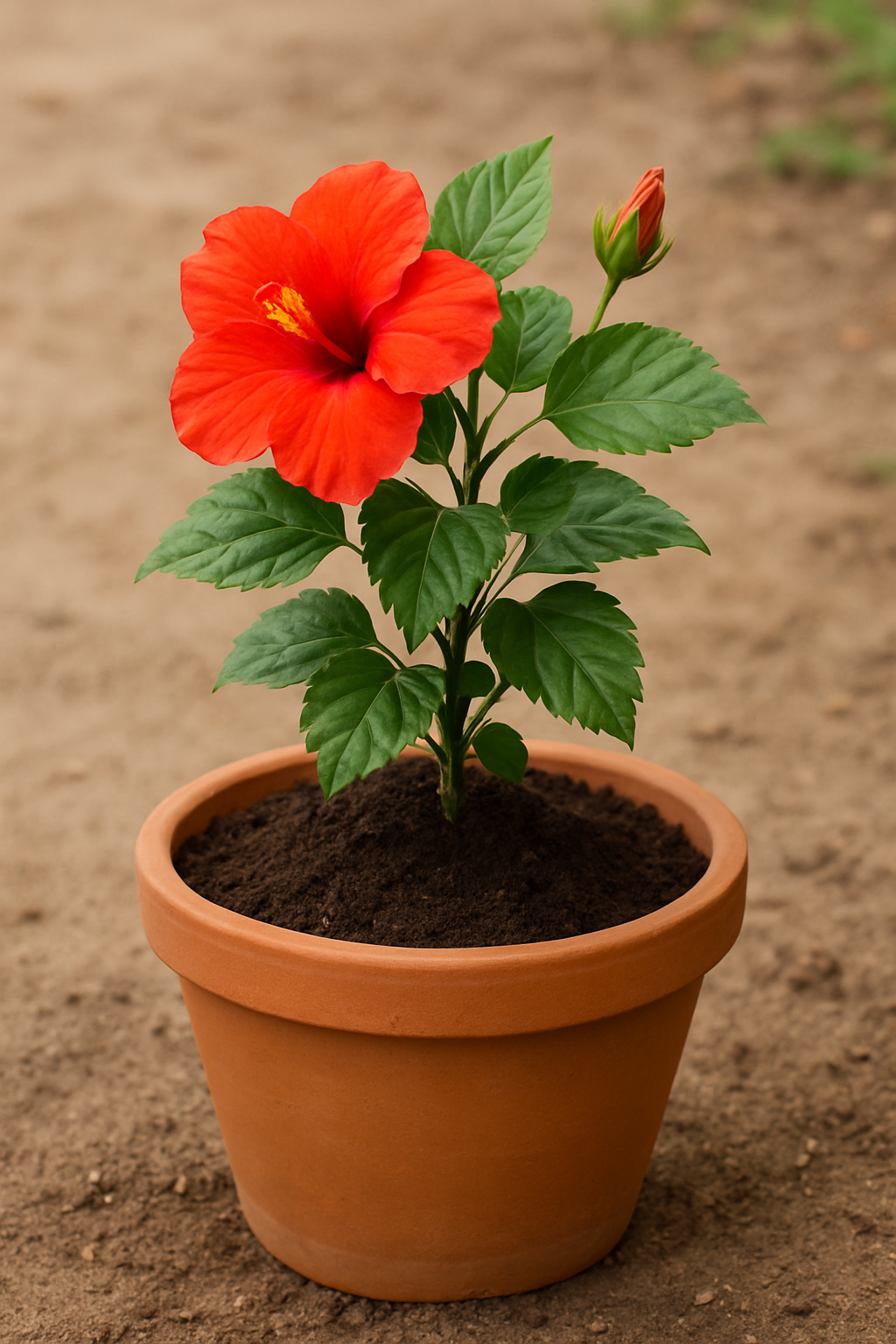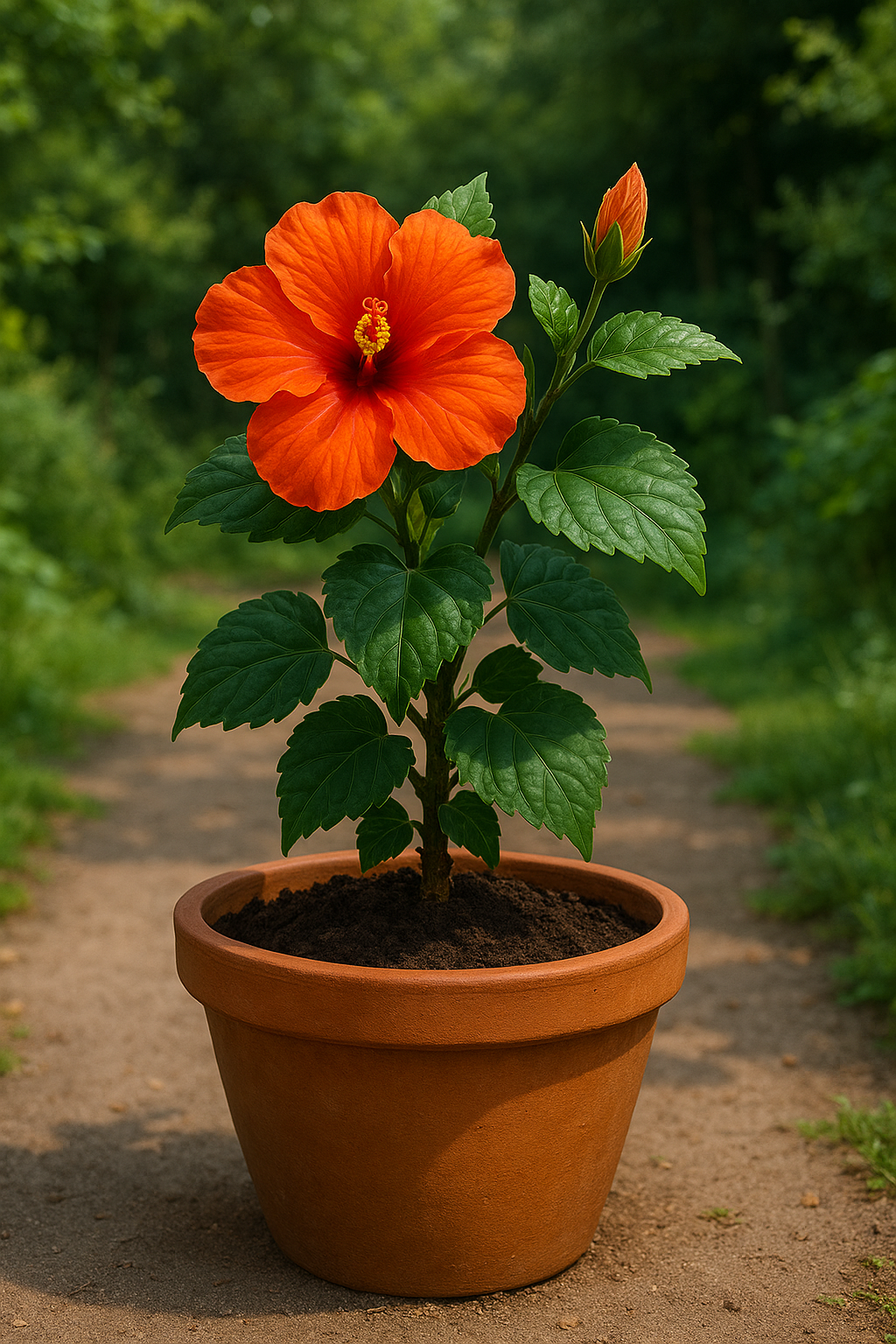Hibiscus (Hibiscus spp.)
Hibiscus spp. • Malvaceae Family
Hibiscus is a vibrant flowering plant known for its large, showy blooms and ease of propagation. Both tropical and hardy types can be grown by cuttings, seeds, or layering. These versatile plants thrive in sunny spots and bring tropical flair to any garden or patio.
Best Propagation Method
Stem Cuttings - Vibrant tropical blooms!
Take 4–6 inch softwood cuttings in spring or early summer from healthy, non-flowering shoots.
Cut just below a leaf node using sterilized pruning shears, ideally at a 45° angle.
Remove leaves from the lower half and apply rooting hormone to the cut end.
Insert into a pre-moistened mix of perlite and peat/coir (or sand), about 2–3 inches deep.
Cover with clear plastic or humidity dome; avoid direct contact with leaves.
Place in bright, indirect light at 70–75°F (21–24°C) with consistent moisture.
Vent periodically to refresh air; mist if soil dries out.
Check for rooting after 4–6 weeks by gently tugging the cutting for resistance.
Once rooted, gradually acclimate to normal conditions and transplant to a larger pot.
Light Requirements
Provide full sun (6+ hours/day) for best blooms. Partial shade tolerated in hot climates.
Watering
Keep soil consistently moist but not soggy. Tropical hibiscus in pots may need daily watering in summer.
Soil Requirements
Use fertile, well-draining loamy soil with neutral to slightly acidic pH (6.0–7.0).
Temperature
Hardy types tolerate down to -30°C; tropical types need 21–32°C and protection below 10°C.
Pinch or prune to shape and encourage more blooms; cut back in early spring.
Water regularly, especially in heat; avoid letting soil dry out or stay soggy.
Watch for pests like aphids, whiteflies, and spider mites—use insecticidal soap if needed.
Tropical types bloom almost year-round in ideal conditions, hardy types bloom late summer.
Bring tropical hibiscus indoors before frost; expect leaf drop and semi-dormancy.
Hardy hibiscus dies back in winter—cut stems down and mulch roots in cold areas.
Propagation is easy—start multiple cuttings to ensure success, especially with tropical types.
Keep high humidity during rooting phase; mist or cover as needed to prevent drying.
Hibiscus sabdariffa (roselle) is used in herbal teas and has medicinal value.
Use sterilized tools when propagating to prevent disease spread.



